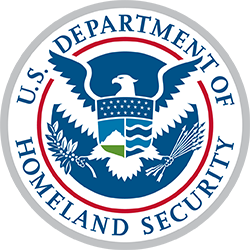How to implement 21st Century IDEA
Requirements for delivering a digital-first public experience —Learn how to implement 21st Century IDEA to design and deliver better websites and digital services.
Guide to the Site Scanning program —A program to automatically generate data about the health and best practices of federal websites.
An introduction to domain management —A .gov domain instantly conveys credibility and trustworthiness, and proper domain management practices ensure that your website is secure …
An introduction to search —Learn why search functionality is an important component of federal websites, and discover how to add a search function to your website.
An introduction to digital governance —Learn why governance is essential to digital experience.
Digital.gov Communities of Practice
Web Managers
Create a better online experience for the public alongside government web content managers.
Communicators
Improve written and verbal communication to make government more effective.
Multilingual
Expand and improve digital content in languages other than English.
Plain Language
Promote the use of plain language to provide better service to the public.
Social Media
Improve social media outreach and performance.
User Experience
Create better user-centered products for the public.
Web Analytics
Make better decisions using web analytics and other optimization strategies.
News and Events
Innovative work, news, and ideas from people and teams in government
Equity study reaches 4,000 participants
Launched last fall, the General Services Administration equity study on remote identity proofing aims to determine if biases exist in the algorithms used for online identity verification. The study has now reached its goal of recruiting 4,000 participants from diverse communities, and experts are ready to begin analysis of the data. Learn how the team at GSA plans to conduct this data analysis, and how their findings will lead to improved equitable services delivery in technology across the government. — via General Services Administration

FedRAMP governance
The Federal Risk and Authorization Management Program (FedRAMP) has recently updated its governance structure to better serve its customers. Learn about their recently-formed FedRAMP Board, composed of federal executives; the FedRAMP Technical Advisory Group (TAG), composed of technology experts; and updates made to the Federal Security Cloud Advisory Committee (FSCAC). These groups collectively aim to strengthen and expand FedRAMP’s cloud service capabilities. — via FedRAMP

Three tips for using meta descriptions
At USA.gov and USAGov en Español, the goal is to make content more useful to the public, and meta descriptions are one way to help people quickly find the government information they’re looking for. These brief summaries of webpage content appear in search engine results to entice users to click through, attracting visitors to agency websites. Regularly updating these descriptions based on user data can enhance their effectiveness. Read in more detail about their three tips to create effective meta descriptions: identify commonly searched keywords, write engaging and actionable descriptions, and ensure each one is unique. — via USA.gov

Why some technologists choose public service
The General Services Administration (GSA) employs nearly 12,000 people who provide services to federal agencies and the public, and has been recognized as one of the top federal agencies to work for, emphasizing a people-first culture. Through the Tech to Gov initiative, GSA’s Technology Transformation Services (TTS) has successfully recruited top tech talent to enhance digital government services. Get to know some of GSA’s newest technologists. — via General Services Administration

A five-step plan for communicating with leadership
10x Fiscal Year 2023 Impact Report
In FY23, 10x doubled down on its commitment to creating solutions that serve the American public by investing in projects that aligned with the themes: Digital Foundations and Equity in Delivery. The team celebrated key wins with projects like Automated Security Authorization Processing (ASAP), and are very hopeful that newer projects, such as Digital Access to Justice, will make a difference. Explore what they did, where they’re going next — and what was learned along the way. — via 10x

One year with the new USAGov
It has been a year since USA.gov and USAGov en Español were relaunched using human-centered design principles. Using task backlog, the USAGov team has addressed content gaps, improved discoverability, and implemented technical updates. Through usability tests, visitor comments, and click behavior the team was able to unravel and respond to user feedback and unmet needs, leading to noticeable increases in visitor satisfaction and task accomplishment. Moving forward, the focus will shift to enhancing public engagement with the government, improving the search for benefits-related content, and exploring interactive and personalized user experiences. — via USA.gov

FEMA National Summit on Risk Communications, Crisis Communications, and Community Engagement
The Federal Emergency Management Agency Office of External Affairs is convening risk and crisis communicators and community leaders who are on the front-line of the climate and emerging hazard crises. Attend the free, June 10, 2024, summit virtually, or in Washington, DC. The agenda includes: the sharing invaluable tools and insights, how to implement culturally competent and accessible communications, how to integrate behavior change strategies, and more. An ASL interpreter will be provided. — via Federal Emergency Management Agency





